
Tigercat_LPG/iStock/GettyImages
Making Play-Doh Pliable Again
Work water into dried-out Play-Doh a few drops at a time until it feels like dense, tacky, bread dough. The same ingredients used in bread—flour, water and salt—comprise Play-Doh, so using just enough water to bloom the starch particles works to rehydrate it. And, as with bread, you have a few ways to get that water into the starch granules; you don't even have to get your hands wet if you don't want to.
Overnight Hydration
Overnight hydration works best when the dough hasn't desiccated yet—if you can still mold it, but it takes force to do so and it cracks at a certain point. To hydrate ot overnight, wrap the dried Play-Doh in a warm, moist paper towel and put it in its container or another type of airtight storage container. The next morning, the Play-Doh will have all the suppleness of its former self—unless it was drier than you thought, in which case you'll need to use water droplets.
Instant Hydration
This method will get your Play-Doh pliable in minutes. Play-Doh dries inconsistently, so there's not really an exact amount of water to use; you really have to go by feel here. If you have a whole ball dried Play-Doh, say around 3 ounces (the amount that comes in a single container), start off with as much as 1 teaspoon of water and go from there.
Set the dried Play-Doh in a mixing bowl and add a few drops of water using a dropper, if you have one. If not, just moisten your fingers with water. Next, knead the Play-Doh, just like you would bread dough, by folding, turning and pressing. If you need more water, add another drop or two, or moisten your fingers as needed.
No-Touchy Technique
If you don't want to get your fingers dirty, put the Play-Doh in a sealable plastic bag and add drops of water as needed. Seal the bag, and mush it, shape it, ball it up—whatever you have to do to get the water in there. Again, use just enough to moisten the dough, not soak it; if the color runs, you used to much water.
When to Call it Quits
Play-Doh doesn't last forever. Just like with bread, gluten chains weaken, fall apart and won't congeal. This occurs over years or after multiple rehydrations. You have to take cleanliness into consideration too. Although Play-Doh is nontoxic, all the germs, bacteria and dirt that adhere to it aren't. If you have doubts, throw it out.
How to Make Play Dough
If you can make bread dough, you can make your own play dough. Although homemade play dough doesn't last as long as Play-Doh—the commercial product has stabilizers for longevity (as well as a patented fragrance)—you and your kids will get just as much fun out of this DIY alternative.
Mix Your Ingredients
You need 2 cups all-purpose flour, 1 1/2 cups salt, 2 cups cold water, 1 tablespoon vegetable oil and 2 1/2 teaspoons of cream of tartar. Mix the flour, salt, water, vegetable oil and cream of tartar in a saucepan.
Cook and Stir
Cook the dough mixture for 5 minutes over medium heat. Stir the mixture continuously; it will have the consistency of mashed potatoes when ready.
Add Color
Divide the dough into four equal pieces and add color. Knead 6 to 8 drops of food coloring into each portion of dough.
Store homemade play dough and regular Play-Doh in an airtight food-safe container or sealable food-storage bag.
Related Articles

How Long to Knead Bread Dough by Hand?

Laundry Tips for Play-Doh

Homemade Fishing Bait for Bluegills

How to Make Breadsticks Out of Pizza ...
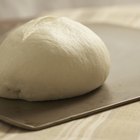
What to Do With Pizza Dough When You're ...

How to Make Homemade Traditional Polish ...

Can I Make Chapati Dough in Advance?
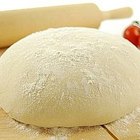
How to Make Pizza Shop Quality Pizza ...

Does Brown Rice Ever Get Soft?
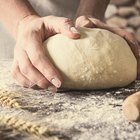
Secret to Making Soft Chewy Italian ...

Calories in Bocconcini Cheese

How to Make Pumpkin Bread Moist

How to Clean Cashmere Socks
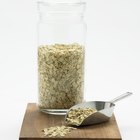
Why Won't My No-Bake Cookies Harden?

Easy Soft Pretzel Recipe
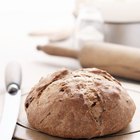
How to Soften Overly Hard Bread

Can I Use Baking Soda as a Substitute ...
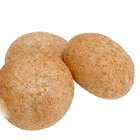
How to Make Dinner Rolls With a ...

How to Bleach a White Dress Shirt

Can You Refrigerate Homemade Yeast ...
References
Writer Bio
A.J. Andrews' work has appeared in Food and Wine, Fricote and "BBC Good Food." He lives in Europe where he bakes with wild yeast, milks goats for cheese and prepares for the Court of Master Sommeliers level II exam. Andrews received formal training at Le Cordon Bleu.